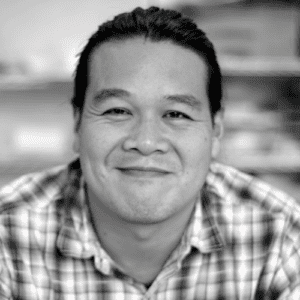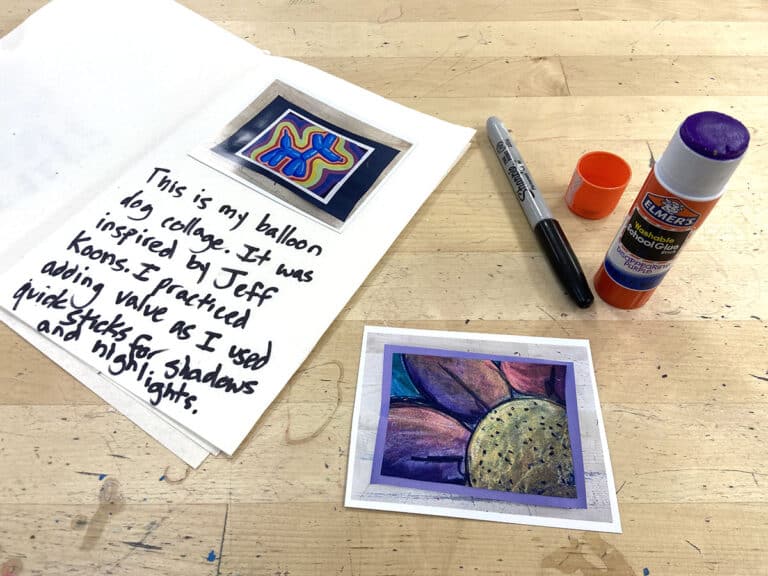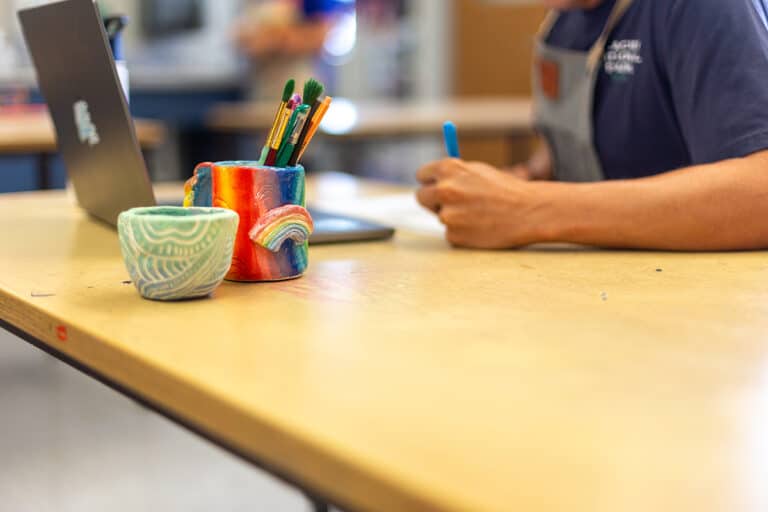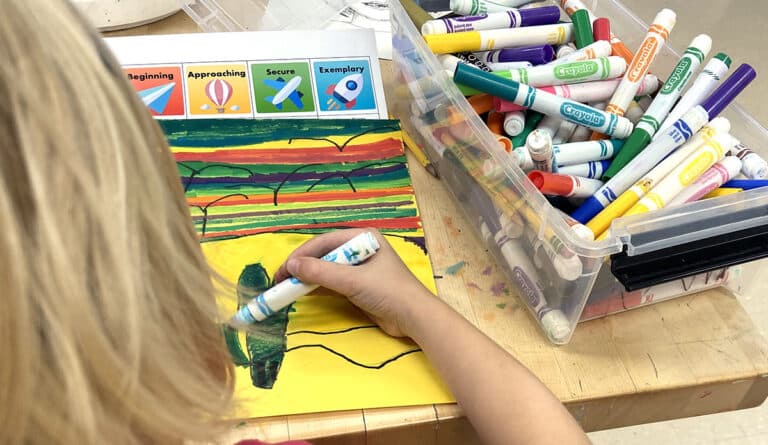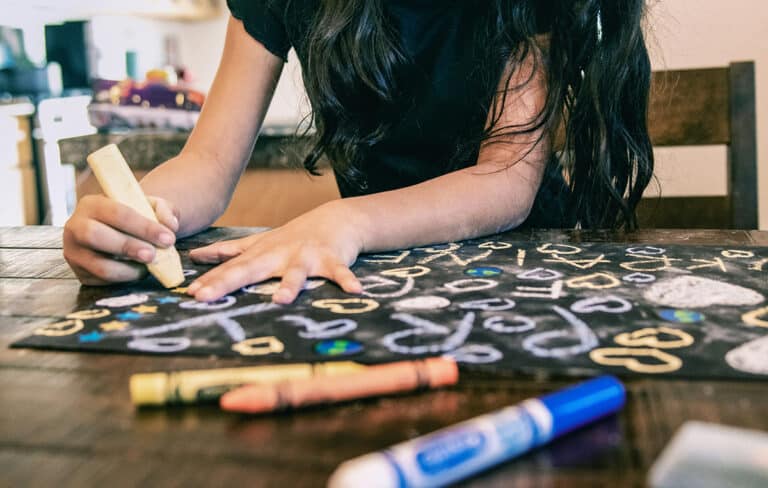For many visual art teachers, time with students is precious and fleeting. Sometimes you have less than an hour with students before they’re gone and a new crop of students come through the door. There’s barely enough time to finish a project, let alone stop and reflect on the work.
However, as educators and as artists, we know just how valuable it is to take time to reflect on and to make revisions to our work.
So how do we build reflection time into our classroom routines? And how do we use that time to help our students better understand the creative process? Let’s find out.
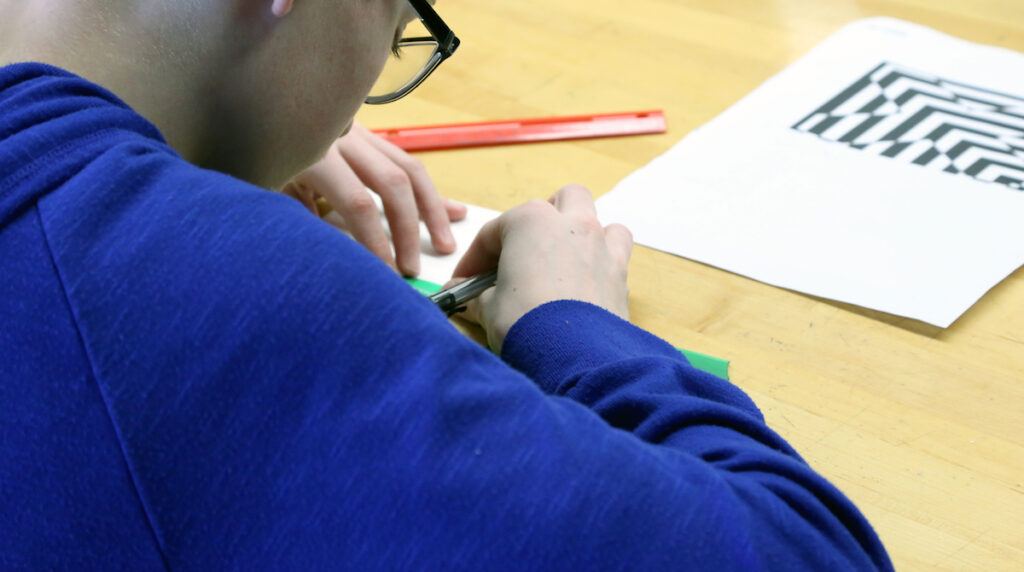
Why is it essential for students to recognize the value of process?
Our society values products and outcomes, but often ignores how we get there. But artists grasp the value of the process, which comes from the research, planning, and execution of a piece of work. An understanding of the process not only allows for growth and learning but also for a more authentic presentation of work and self. It’s how artists can push boundaries and move beyond the simple reproduction of an object and into the creation of new works of art.
Additionally, understanding how they’ve gotten from point A to point B helps our students build cognitive functions and processing. The development of an iterative process that looks at where you’ve been, where you are, and where you want to go, holds immense value. Pausing to reflect helps to guide this journey.
Recording the Creative Process
One way I’ve found to help students reflect on the creative process is to have them record it. While that may sound daunting, I assure you it can be done.
At my school, the 6th-grade students work with the drama teacher, the dance teacher, and me on a rotating basis, spending eight sessions with each teacher before moving on to the next. After the students have worked with each teacher, we bring them back together and work as one large group on an interdisciplinary collaborative project. It’s a creative format that allows for experimentation and flexibility, but it also moves quickly!
It was through this project we figured out how we could have students document their process through daily reflections. Our goal was to allow them to look back on their work and see how they’d incorporated projects and concepts from all three disciplines.
The daily reflections were so successful; I’m considering doing them with all of my classes.
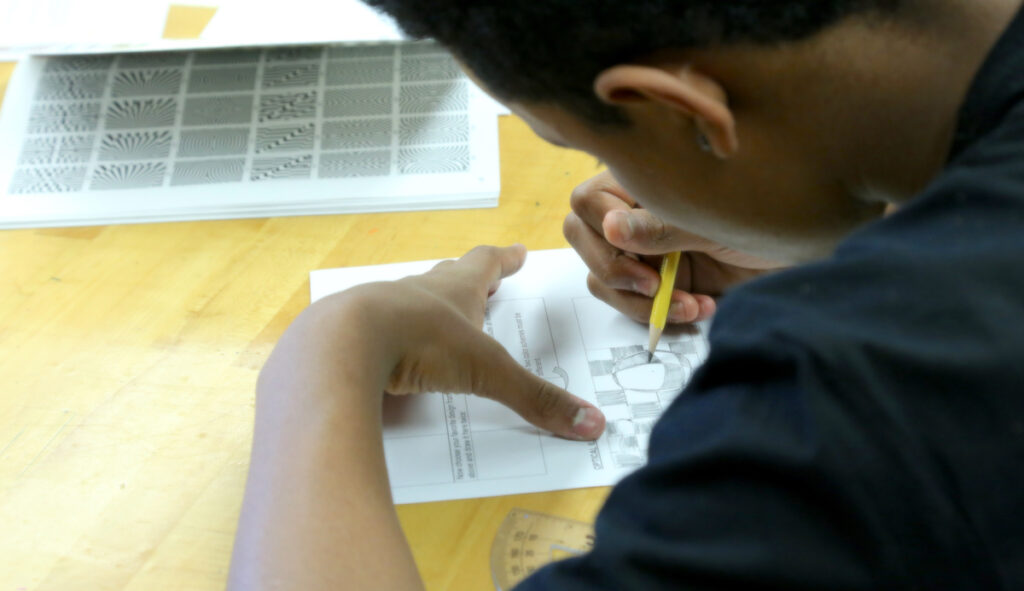
If you’d like to try something similar, here’s what to do:
1. At the end of each class, set aside five to seven minutes for students to reflect on the day’s activities.
2. Have students snap a quick photo of their work.
This can be done on an iPad or with a digital camera or another device. If you don’t have the technology available in your classroom, you can also have students do a quick thumbnail sketch.
3. Have students respond to one or two prompts in writing.
You might consider asking things like:
- What was your inspiration for the project/work you completed today?
- What was the biggest challenge you encountered on the project?
- How does this project tie together previous exercises and concepts from the class?
- What was your favorite part of class today?
At my school, we can to do this type of reflection using a discussion thread (private to the individual student and teachers) on our school’s learning platform called Schoology. This platform makes the whole process extremely easy. After the students make their entries, we can respond with clarifying questions, informal feedback, critique, and positive affirmations.
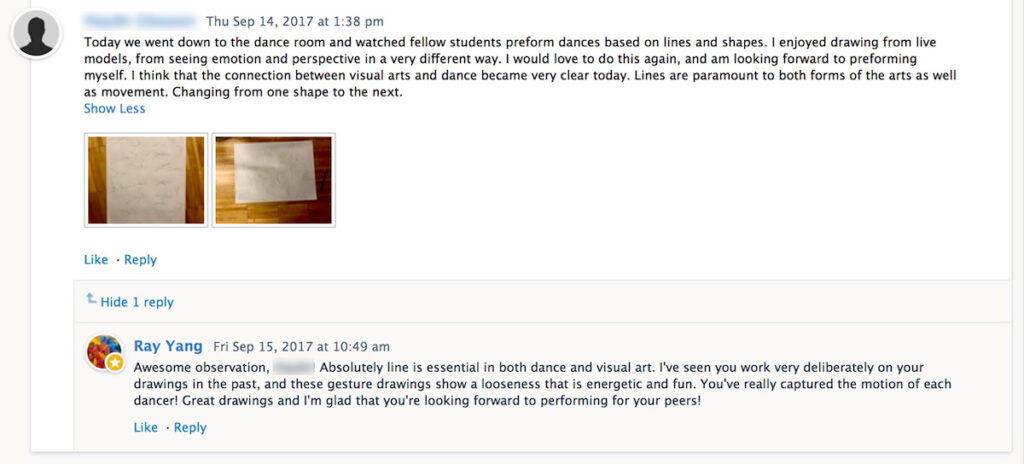
The value of these reflections and individual journals has been extremely beneficial to us, as teachers.
Creating this back and forth dialogue with the students has allowed us to:
- See which students are connecting with which concepts and which students seem lost or unengaged
- Direct students to refer to earlier work and connect threads between the different disciplines
- Create dialogue around student work and process as we respond to their entries
- Get to know the students better
- Look back on student work while writing comments and grades
- Provide evidence to administrators of the creative process our students have gone through and the ways our classes are building student thinking and analysis skills
If your school doesn’t have a learning management system that supports this type of back and forth dialogue, you can set up something similar through a private classroom blog or even through a set of sketchbooks. Anything where students are writing and recording can provide valuable documentation.
An Alternate Approach: Cutting Back
For my other classes, my schedule is more traditional, as I see my students on a consistent basis. Even so, I feel a rush to get through project after project during the course. After seeing how formal reflection positively informed my teaching, I worked on making shifts with my Art Foundations class, a survey class for 7th and 8th-grade students.
One of the first things I did was to make a conscious choice to let go of some of the projects in my curriculum.
Even though there are lots of fun projects I want to do with students, the extra space to breathe is more important. I wanted to create room to build in reflection and journaling but was worried about kids not taking the reflections seriously, or giving little thought to them.
If you’re having similar thoughts, I would encourage you to start with exit slips. In my experience, these can serve several purposes. First, they allow you to gauge how much the students are enjoying particular projects. Second, they give students a chance to have a voice and participate in the structure of your work. Finally, and most importantly, they provide a moment for students to pause and reflect on their work.
When starting out, simple prompts work best. You might want to try things like:
- A particular challenge for me was…
- An awesome success for me was…
Once students are comfortable with simple feedback forms like this, you can move onto more extensive reflections. For example, you can post things like essential questions and enduring understandings on the board throughout a project. In this way, you can remind students what they should be thinking about while working. This method helps keep students in the mode of process and reflection, rather than just creation.
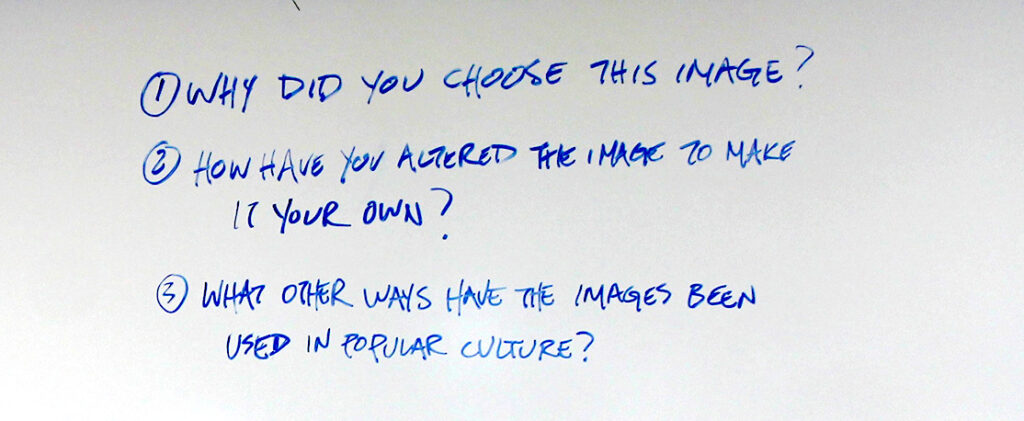
The most important piece of this, ultimately, is building the artistic skill of reflection artists use as part of the larger creative process. Tangible documentation of the process allows students to see their progress and understand their, and others’, thinking. Seeing the process reinforces that progress is being made and solidifies understandings of technique and skill. There are many methods of reflection, and while the ones I’ve shared have worked for me, I am always considering how to expand on them.
How is the creative process revealed in your classroom?
What ways do your students reflect on their work?
Magazine articles and podcasts are opinions of professional education contributors and do not necessarily represent the position of the Art of Education University (AOEU) or its academic offerings. Contributors use terms in the way they are most often talked about in the scope of their educational experiences.

